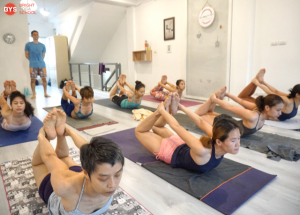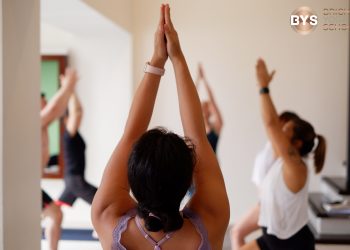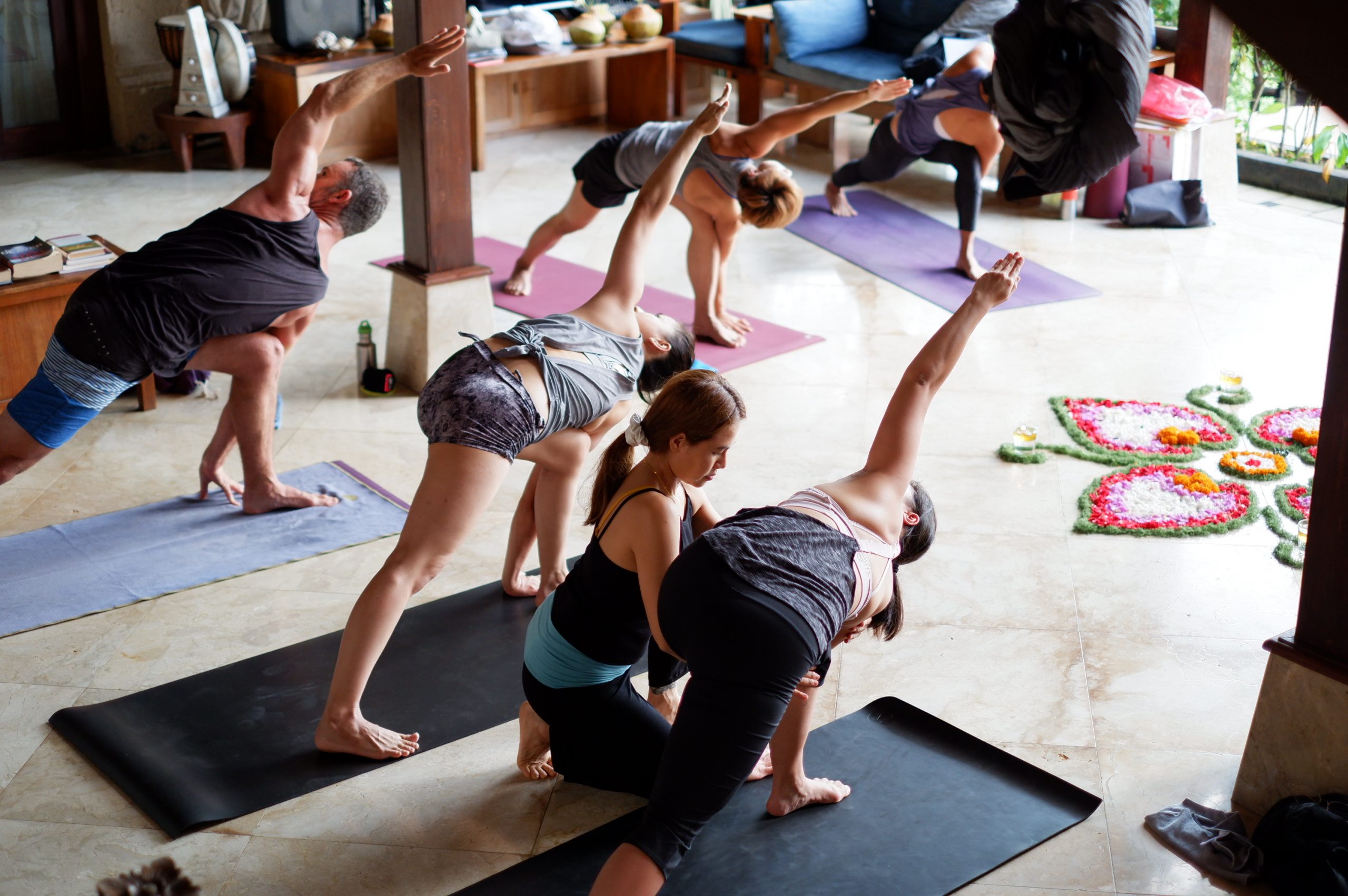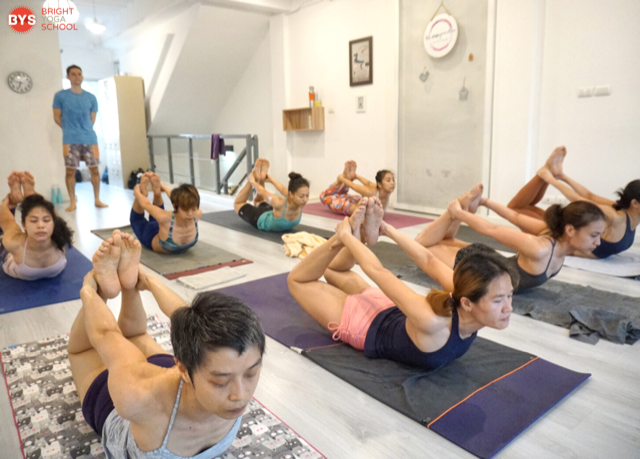Tag: ashtanga vinyasa yoga
Importancia de un profesor en la práctica
Hace unos días atrás un amigo me preguntó si es importante tener un profesor de yoga, hoy en día se escucha decir mucho la frase, “tú eres tu mejor maestro”
Esta afirmación es totalmente cierta, especialmente cuando exploramos una postura o Asana, el practicante es el que está experimentado la práctica por lo que en ese momento nadie podrá tener una percepción más clara acerca de las sensaciones y procesos que se están experimentando durante esa Asana, sin embargo, en términos de técnica y alineación anatómicamente segura, como principiante en la práctica la idea de “tú eres tu mejor maestro” tal vez no sea la mejor opción, ya que dependiendo de cuál sea tu conciencia corporal o conexión que tengas con tu cuerpo, la práctica puede ser beneficiosa o altamente lesionante
Entre los primeros 5 a 7 años de práctica es necesario tener un profesor de yoga que pueda guiarte. Al practicar yoga se empezarán a experimentar diferentes emocionales y sensaciones, es en este momento es donde la guía de un profesor y sus consejos serán de suma importancia para seguir progresando en tu camino como practicante.
Te recomendamos que la persona que sigas como tu instructor de yoga tiene que ser una persona “calificada” esto significa tener suficiente experiencia en la práctica para poder guiar a otros de forma segura
Yoga no puede ser aprendido exclusivamente leyendo libros, participando en talleres, intensivos y trainings, estas son herramientas sumamente útiles, pero la práctica es lo que te permitirá digerir, entender y desarrollar la habilidad de compartir tu práctica desde tu experiencia y no basado en la memoria. Es por esto que un profesor cualificado debe invertir tiempo en su práctica personal
En Bright Yoga entendemos que la gran mayoría de la información que compartimos con los estudiantes debe venir de cómo experimentamos la práctica
Ahora, ¿Que tan frecuente debo ver a mi profesor? En el primer año es importante visitar a tu profesor tan frecuente como sea posible, esto te ayudará a construir una base sólida en tu práctica que te permitirá desarrollar tu práctica de forma segura
Luego, de ser posible, te será de gran ayuda si puedes visitar tu profesor una vez al mes o más frecuentemente, de tal forma de tener la oportunidad de corregir hábitos que se pueden crear con facilidad cuando uno práctica solo en casa
Especialmente si careces de inspiración, practicar con tu profesor y otros estudiantes te permitirá mantener la llama de la práctica viva
A Ricardo Martin, uno de nuestros directores, le gusta invertir un mes al año en el cual pueda visitar a su profesor enfocarse en la práctica y seguir profundizando y refinando su práctica y entendimiento en el método de Ashtanga vinyasa Yoga a mayor profundidad.
Dejanos saber si tienes alguna pregunta a info@brightyoga.com que con gusto te podemos ayudar
Buen día y bonita práctica
Balance stability and mobility through the Ashtanga system
Mobility and stability are essential aspects of being healthy; these two translate in more agility. A mobile body is going to facilitate the flow of energy and information through our nervous system. Live in a mobile body is like living in a house with plenty of space for you to move. Stability will prevent hypermobility in the joints; this will avoid overstretching in the tendons and ligaments, preventing injuries
In Ashtanga Vinyasa Yoga we aimed to bring stability and mobility into a balanced state when any of these two is overemphasize, imbalance in the body will happen, followed by tension, resulting in injure
Stability can also be understood as strength and mobility as flexibility. In a sequence like primary series, you will have the opportunity to strengthen the legs, increase mobility on the hips, and improve mobility and stability of the shoulders. When your legs are strong, hips and shoulders stable and mobile something interesting is going to happen on your body; your spine will feel more free and stable as well, a mobile spine will increase the overall freedom within the body, and it will increase the flow of energy and information through the nervous system
A healthy or free spine is critical for a healthy body, this can prevent and improve many physical problems that we hear today more often as a result of a sedentary lifestyle like sciatica pain, herniated disc, headache, fatigue, numbness in the limbs and many others
How is this possible?
Improve the mobility of the spine, is a byproduct of balance muscles in the front and back body, flexible hips, strong legs, and mobile shoulders, these will increase the movement between vertebrates due to a reduction of the pressure between these two bones, this translate as space, space that will facilitate flow of information through the nervous system and blood through the veins and vessels that run along the spine
Imagine the possibility to live in a body that is fully interconnected that can recover, and have the ability to communicate with you in a precise way as you live your life and move through the practice.
Fully connect with your body is something that everybody can achieve with practice
Be Patient with Yourself and Enjoy the Journey
Alcances de la Practica de Ashtanga

La práctica de Ashtaga Vinyasa Yoga tiene una amplia gama de beneficios que pueden ser percibidos por cualquier practicante independientemente del tiempo o nivel de práctica
En principio la práctica empezará a trabajar a nivel físico, todas las posturas ejecutadas durante la práctica permitirán que la gran mayoría de las articulaciones en el cuerpo se flexibilicen, este proceso de apertura se amplifica al combinar la respiración, bandhas o cierres energéticos y las posturas; cuando estos elementos son combinados durante la sesión de yoga, se producirá un incremento en el calor interno que permitirá calentar el cuerpo desde el interior hacia el exterior, este fuego interior generado es llamado en los textos de yoga “Agni” el cual no solo tiene la capacidad de incrementar el calor interno sino que adicionalmente promueve la eliminación de toxinas a nivel físico y mental, en este caso los alcances de la práctica no únicamente se limitan al cuerpo físico si no que se extiende al nivel mental y muchas otras capas de nuestro Ser
¿Cómo una práctica que parece netamente física puede trabajar a distintos niveles?
La respuesta se encuentra en los diferentes elementos que son utilizados en la práctica.
El principal punto de atención en la práctica es la respiración Ujjayi, este tipo de respiración se ejecuta contrayendo ligeramente los músculos de la epiglotis, esto generará mayor fricción entre el aire y la tráquea lo cual no únicamente permitirá tener un mayor control sobre el flujo de aire que entra y sale de los pulmones, sino que adicionalmente la fricción producida entre el aire y la tráquea generará un sonido similar al de las olas del mar
Este sonido facilitará que la atención sea dirigida a la respiración y no al dialogo interno y procesos mentales.
Cuando la atención se ancla en el sonido de la respiración serás capaz de llevar tu atención hacia adentro, es en este momento tendrás la posibilidad de percibir impresiones mentales que hayan sido almacenada en el subconsciente y progresivamente trabajarlas, reconocerlas y entenderlas; auto-entendimiento permitirá cultivar ecuanimidad hacia estas experiencias del pasado y poco a poco estas serán liberadas de la mente y el subconsciente
Cuando las impresiones mentales son procesadas y reducidas por medio del trabajo interior de auto- reconocimiento, el practicante puede experimentar un incremento rápido y progresivo en la flexibilidad ya que los músculos, tendones, tejido conectivo entre muchos otros almacenan, al igual que la mente, emociones y tensiones. Liberar este tipo de impresiones no únicamente generará mayor apertura a nivel físico sino mayor aceptación y ligereza a nivel mental, facilitando una percepción más clara de la realidad
En este caso como puedes notar la práctica no únicamente trabaja en el plano físico, sino que se extiende a muchos otros niveles, es por esto que la práctica tiene la potencialidad de cambiar la persona a nivel físico y mental
Practica con paciencia, estos beneficios pueden ser percibidos por cualquier practicante lo único que necesitas es dedicar tiempo a tu práctica y el resto poco a poco se irá revelando ante ti



